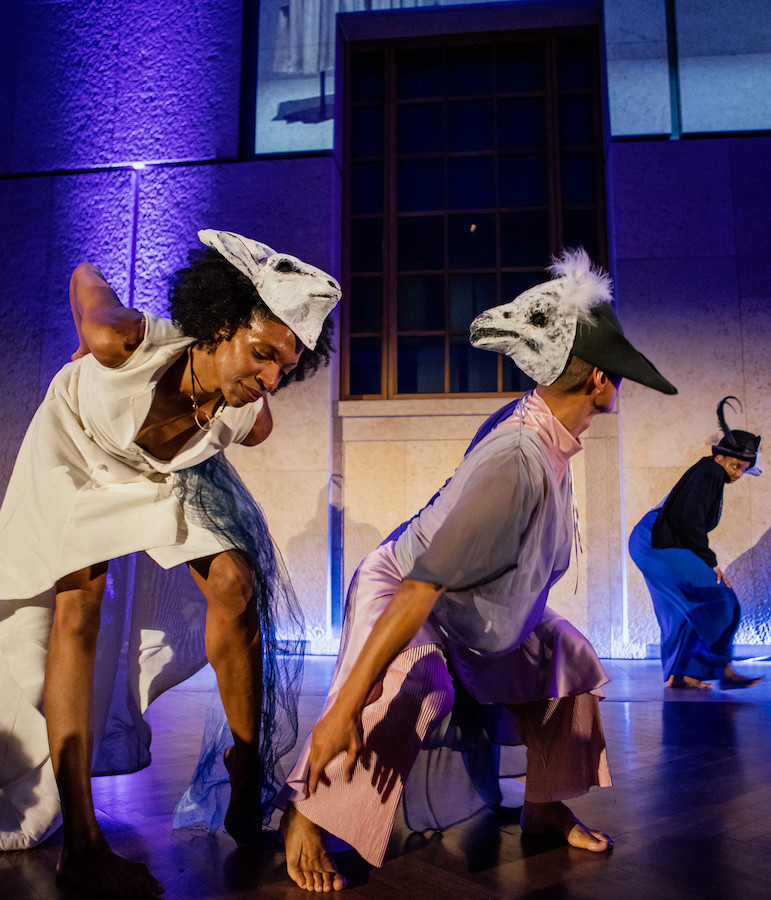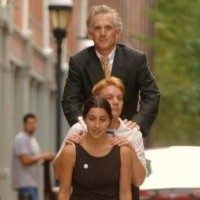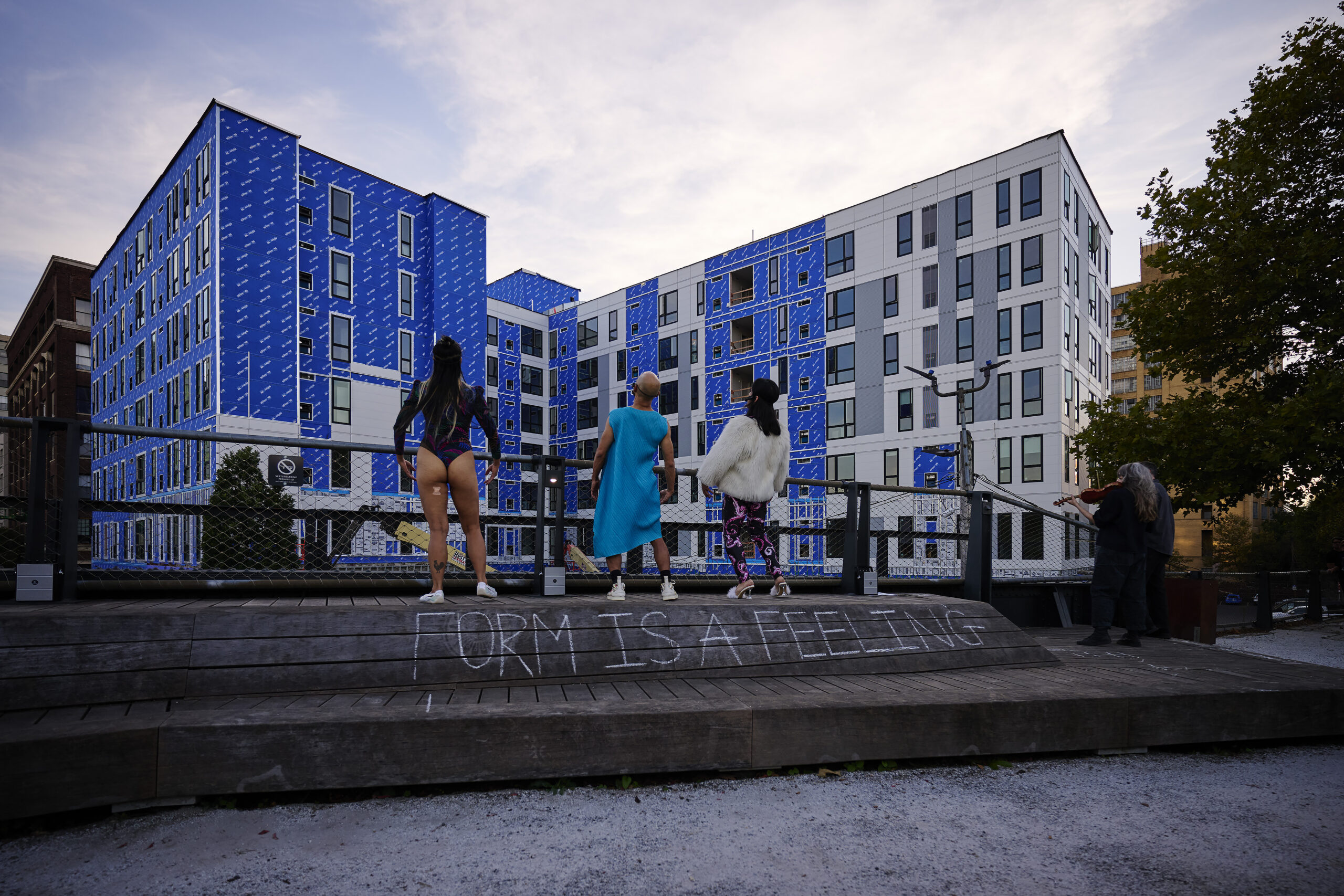Rarely is the case so convincingly made for the benefits derived when museums treat dance as an integral aspect of an exhibition as happened on a recent winter-weather advisory evening at the Barnes Foundation. In this commissioned and first work from a re-imagined Headlong Dance Theater—now co-directed by David Brick and Norma Porter—dancers responded to the art of the early modernist Parisian artist Marie Laurencin, a sly, playful feminist.
The exhibition, Marie Laurencin: Sapphic Paris, features Laurencin’s hyper-feminine, stylized paintings, and drawings of a women-centric world of dreaming, pleasure, and fluid gendering. Her women could have inhabited Christine de Pisan’s proto-feminist The Book of the City of Ladies (1405), except that they were of the Paris salons of the early 20th C. exploring the possibilities of feminism in modernity.
Headlong’s immersive Horse Woman: Making a World of One’s Own was not confined to one fixed, proscenium-bound area but unfolded in a series of trios and solos from Courtney Henry, Saturn Freeman, and Jungwoong Kim through four museum spaces, including the Laurencin galleries. The audience experienced the performance as they would have if they’d come just to see the art on the walls, walking freely with curiosity and attention; audience and dancers a part of the museum space.
A pre-performance talk revealed that the Barnes staff reached out to Headlong to specifically include dance during the exhibit because, in addition to painting, Laurencin designed costumes and sets for the ballet. This exhibition featured artifacts, including her stage curtain design from the 1924 ballet Les biches (The Does), choreographed by Bronislava Nijinska. Les biches was also slang for lesbians, and the ballet featured a Laurencin garbed androgynous central character, The Garçonne. As Brick explained, Headlong did not want to create a response to this ballet. Rather they wanted to seize on the beguiling and subversive transhuman elements in many of Laurencin’s paintings, “particularly the ways in which humans and animals blur together to create space for a more complex self, queer and fluid in its invention of a larger, more encompassing feminine.” Brick and Porter related that they found the Barnes to be very supportive in allowing them to go their own creative way as dance artists.
Unlike the progression in many performance works, where movement precedes costume design, Maiko Matsushima’s designs came first, fueling the individualized choreography of each dancer. Each wore an animal mask headpiece: Saturn, a wolverine animal; Henry, a goat; and Kim, a bird. Often, when the dancer looked away or sideways, we saw both human and animal in a Cubist mix of multiple gazes and species. The hues of Matsushima’s fabrics and their soft curves resonated with Laurencin’s curvilinear figures and pastel tones.
Henry’s flowing solos and precision extensions led the audience through each of the Laurencin galleries with her floor length white gown and a train of diaphanous blue threads trailing behind from her horned goat head mask. Henry swept through the galleries in sensuous synchronicity with the curvaceous lines of Laurencin’s figures. At times, Henry countered the hyper-femininity of the paintings with a pedestrian pause on a gallery bench to stretch her feet, or crouching and curling, more animal than human, before a floor level window.

Kim, with his bird headpiece and muted, loose hanging skirt and pants garment, reflected the ways in which Laurencin painted figures in gender-fluid clothing. Kim was the connecting presence during the series of trios that took place in the atrium, alert to the others and the space, and often the catalyst in initiating chains of motion and contact partnering. The series of trios with Kim, Henry, and Saturn ended in a nesting together, disparate species finding a bonded unity. Kim’s solo, which would have included the outer garden but for January temperatures, was set against a red lit glass wall facing the garden, and he alternated between slow, contemplative slides and turns to stark, muscular thrusts of arms and torso. He often channeled the feminine via his flowing skirt and the soft pink/purplish hues of light on him, as well as embodying animal, bird-like walks, and arm gestures. His animated shuddering bespoke a body inhabited by spirits, animal or human or supernatural, which to me reflected the Korean shamanic dance tradition that I know Kim has studied. Toward the solo’s end, Kim slowly took off his bird headpiece, suddenly becoming all human to us. He paused, struck by the creature he held in his extended hands, then slowly replaced it on his head, a particularly moving and memorable action for me.
Saturn Freeman’s solo ran with the spirit of Laurencin’s fierce individuality. They created their own salon and dance around a single pink chaise in the atrium space (a central single sofa also appears in Les biches, and pink, is decidedly a Laurencin, and yes, a Barbie color). Saturn’s intensely personal dance in their distinctive androgynous costume, and, with their own curated music, perhaps best channeled the gender fluidity themes of the exhibition.
Horse Woman brought fresh insights into Laurencin’s work as well as embodying, as only dance can do, this artist’s beguiling enchantments and sensuous visions.
Horse Woman: Making a World of One’s Own, Headlong Dance Theater, sound design and original music by Jordan McCree, Barnes Foundation, Jan. 18.
Photo of Courtney Henry, Jungwoong Kim, Saturn Freeman by Daniel Jackson for Embassy: Interactive
(Courtney Henry is a thINKingDANCE writer.)






